When Globe Wilkins Preschool was awarded an Exceeding Rating in 2012, it set staff, children and families on a path towards realising social justice and inclusion for all children. By Ingrid Maack and Camille Howard.
(This article first appeared in Rattler 110, published by Community Child Care Co-operative (NSW). To purchase a copy, go to: www.ccccnsw.org.au/shop)
Globe Wilkins Preschool sits in the culturally-diverse, inner-west Sydney suburb of Marrickville. Built near the site of the old Globe Mills wool mill, the preschool is within the grounds of Wilkins Primary School. Leased from the Department of Education, it is one of seven services run by Marrickville City Council.
And like the colourful community that surrounds it, the philosophy of cultural inclusion and collaboration at this service shines through as soon as you walk through the front door.
A framed certificate from the Refugee Council of Australia and Marrickville Council declares this service a ‘Refugee Welcome Zone’. A mural of a child and a flock of rainbow lorikeets serves as a reminder of the parents who wrote and self-published a children’s book called The Girl Who Made Rainbows.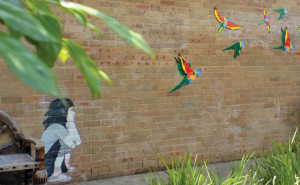
The setting also reflects director Ruth Mules’ passion for social justice and inclusive practice. Working as a teacher for more than 30 years, her career has included roles with Try Youth (now Try Australia) in Melbourne, Brighter Futures with SDN, and as training and resource officer at Lady Gowrie, where she was instrumental in developing anti-bias training and implementing the Quality Improvement and Accreditation System.
This experience goes a long way to understanding why, when the preschool received an Exceeding rating in 2012, Ms Mules identified two very important areas to address to take the service to an Excellent rating: the role of transformative leadership as an action for change, and the inequity in access for children with additional needs.
‘We got together as a team and asked ourselves, where are the gaps in terms of inclusive practice and in terms of minority groups? What are the needs of our community? What’s the demand and where are the gaps? We identified children with additional needs.’
Seeing the large numbers of children with additional needs on their waiting list, Ms Mules and her team decided to challenge the discourse in the sector and community that suggests services cannot manage any more than two or three children with additional needs.
‘We wanted to deconstruct that idea and see ourselves differently. We asked questions like: how can we consider what we do differently, what questions do we need to ask differently and, if we do, what might it look like. We started to unpack that as a team and what we got to was that all families, regardless of their cultural background or specific need, have the right to access preschool for their children.’
They called this research ‘Another Language’.
‘We are trying to implement a transformative leadership approach at Globe, which is all about community leadership and looking at inequity and where they exist and then challenging that. And we are trying to construct fairer and more equitable processes and practices that result in better outcomes for families experiencing disadvantage. The Another Language project is just one project of many that we have happening at Globe.’
Not lost in translation
When it came to researching their inclusive approach to learning, the team looked at children’s individual learning styles. ‘We looked at children’s individual strengths and how they communicated with one another, which led to us developing our own skills around the languages the children were using,’ Ms Mules explains.
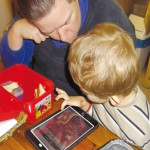 Identifying that some children were visual learners, who needed visual cues, they started using visual learning systems like PODD (Pragmatic Organisation Dynamic Display), which uses symbols and images to help children with complex communication needs communicate more easily.
Identifying that some children were visual learners, who needed visual cues, they started using visual learning systems like PODD (Pragmatic Organisation Dynamic Display), which uses symbols and images to help children with complex communication needs communicate more easily.
With the help of early intervention support services, including Pathways, Ms Mules and her team undertook training to master these visual communication methods. ‘Staff practised it with each other and the children. The children started using it at preschool and at home. All the children used it, not just the children with additional needs, so it was viewed as being a benefit to everyone at the service. It was viewed as another language.’
Over the course of its implementation last year, the project evolved within the child-led program. At the start of the term, after an increase from three to 10 additional needs children, educators were assigned to work with certain children. ‘Relationships developed and we developed a better understanding of the dynamics between the children.’
The next term focused on professional development, including new resources and on-the-job-training, as well as attending a SCAN conference. ‘We started using technology as part of the program and used sensory resources like brushes and combs and blankets and pillows to help children settle and feel calm and have some downtime.’
By term three, Ms Mules says the team was applying the theory and training, and really understanding the languages the children used. ‘We started to see the results in the growth of us as educators as well as all of our children. We saw children engaging with each other.’
A visiting research student, Rose, now a full-time employee, conducted a research project using drama for children with additional needs. ‘We used a storybook called The Way Back Home about a little boy who meets a Martian. They both crash their spacecraft on the same planet and have to work out how to get home. We did some role-play where we used walkie-talkies, and I was in the kitchen pretending to be a Martian and Rose sat with the children while they talked to the Martian and asked the Martian questions. It engaged all the children.’
As the project progressed, Ms Mules and her team realised they were becoming part of a larger network. ‘We became aware of the developing strengths of individual children. We were empowering them to make choices in the preschool setting.’
They were also empowering the children to engage with and learn from each other. After noticing some of the children with additional needs were lying on the floor transfixed by the trains on a set of train tracks, the educators raised the train set off the floor and onto a low table.
‘This simple action meant children were standing around the table and were naturally playing alongside other children and encouraged to make eye contact with other children. The children began to teach each other, and that’s what our philosophy is about: we are co-learners and learn from each other. That was a simple but powerful exercise.’
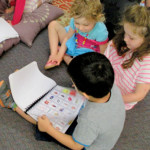 Group times were set up with a visual cue board to explain the routine, which gave visual learners, particularly, another opportunity to engage. Ms Mules recalls changes to a group activity involving a treasure chest: ‘At the beginning of the year, the children played by themselves, but by the end of the year they were naturally creating patterns and images and expressing meaning together.
Group times were set up with a visual cue board to explain the routine, which gave visual learners, particularly, another opportunity to engage. Ms Mules recalls changes to a group activity involving a treasure chest: ‘At the beginning of the year, the children played by themselves, but by the end of the year they were naturally creating patterns and images and expressing meaning together.
‘We still wanted to connect our philosophy of children leading their own learning but wanted to match that with the need to provide support for the different languages of those children who needed it.’
Battle for funding
The preschool faces an ongoing battle to secure funding for the resources to continue to be accessible to children with additional needs.
‘There are huge issues with the way services are funded,’ she says. ‘You have to be really on the ball with applying for SCAN (Supporting Children with Additional Needs) or ISP (Intervention Support Program) funding, as it is essential to maintain the lower staff–child ratios needed to support children.’
Having good partnerships with families is vital, especially when, in order to get funding, they have to ask parents to organise assessments before they may be ready. ‘They hear the message that their child is learning in a unique way and needs to get some assessment, and that’s difficult for families to hear.’
Current funding requirements mean families need to get a diagnosis from other professionals, such as psychologists, paediatricians, speech pathologists or occupational therapists. This can be flawed, Ms Mules suggests, considering children in early learning environments are in group settings.
‘For example, a child may complete a task one-on-one with a professional but when you apply the same task in a group care sitting, the situation might be very different. Those reports from other professionals are hugely valuable but I do believe the perspective of early childhood teachers needs to be taken and treated more seriously from a funding perspective. Because when children experiencing disability have additional staff and support in the preschool setting, that is when we make a real difference. There is research that supports the importance of early intervention. And we see it here.’
Intervention isn’t possible if families aren’t ready for the journey. ‘Once they start it is an arduous task of jumping through hoops and going to appointments, and it can be really overwhelming and challenging for them.
‘You’re without support unless you get reports and assessment and you have to push families to get them. If there was more respect and regard for staff in early childhood to enable the process of funding, a lot of children would be better off.’
Pushing boundaries
Aside from funding, key to the success of the Another Language project is the willingness of staff at Globe Wilkins Preschool to challenge the status quo.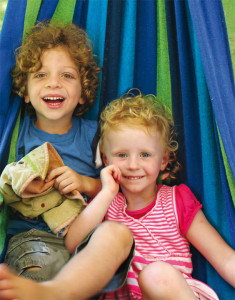
‘We realised that if we always do what we’ve always done and we never challenge or change things, then how do children from minority groups ever get equity and justice in education? It made us more eager to become more knowledgeable and accepting of other forms of communication, and understanding the different forms that children with additional needs have,’ Ms Mules explains.
‘And it helped all of the children in our preschool gain insights into relationships and different ways of being and learning that otherwise they may not have had.
‘The more we engage and respect our similarities and differences, the more compassionate we’ll be and the better we will be at understanding and relating to one another—that’s what early childhood services and communities are all about.’
Part of the Globe Wilkins Preschool community includes a pedagogical leaders group that meets every month to share early learning projects with the seven other Marrickville services. Sharing Another Language will be part of this. ‘It’s another way that we get to advocate for children and families living with disability.’
(This article first appeared in Rattler 110, published by Community Child Care Co-operative (NSW). To purchase a copy, go to: www.ccccnsw.org.au/shop)

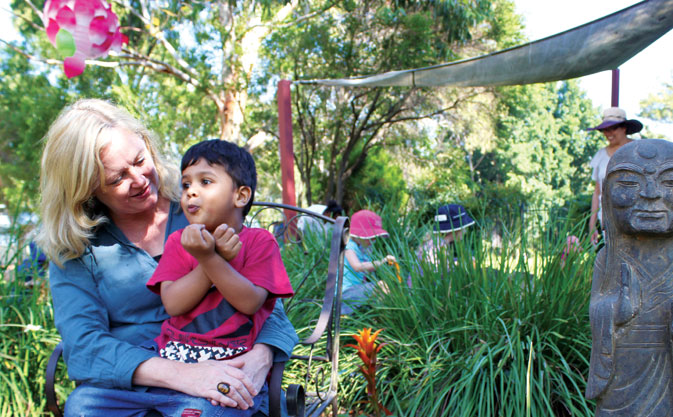

No Comments Yet